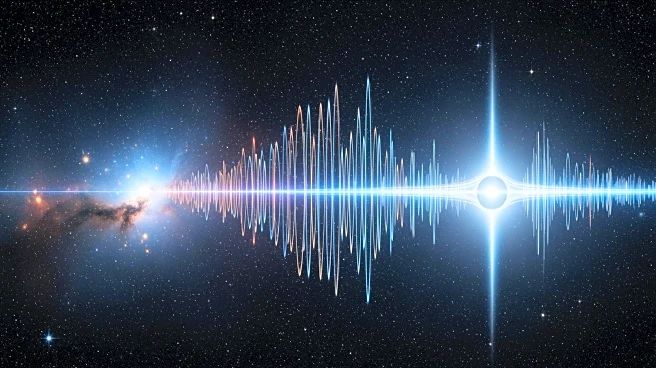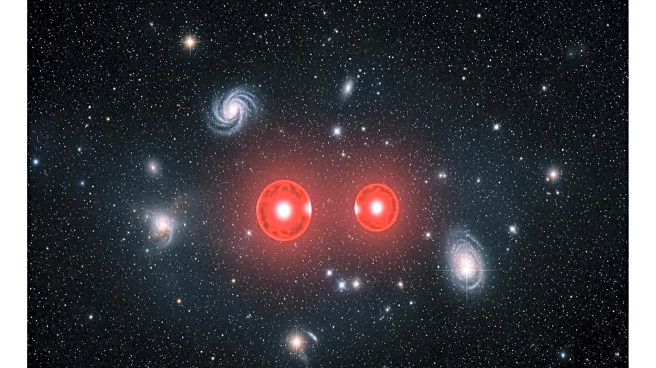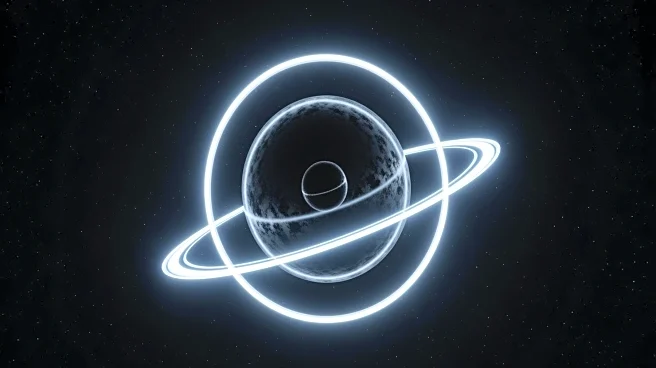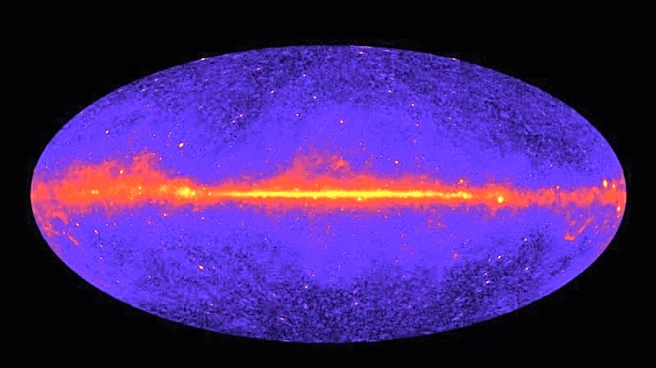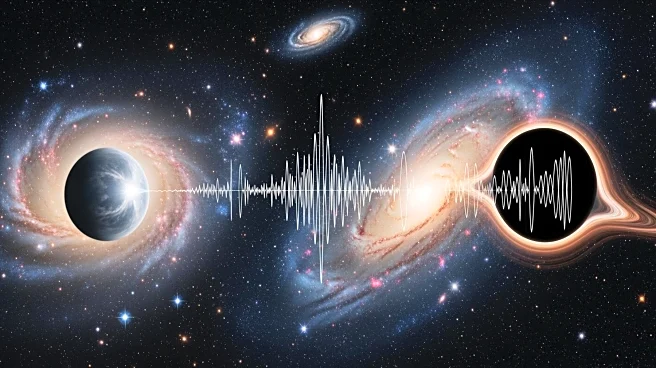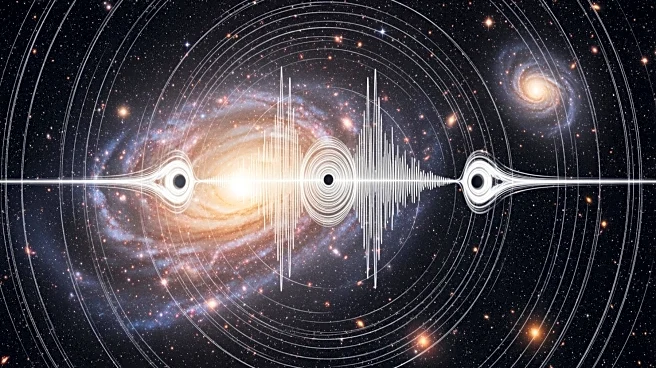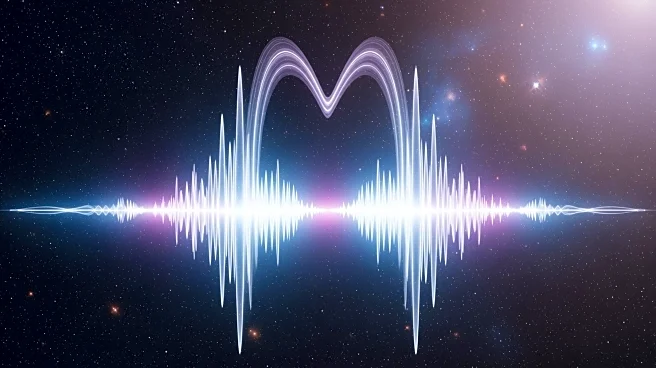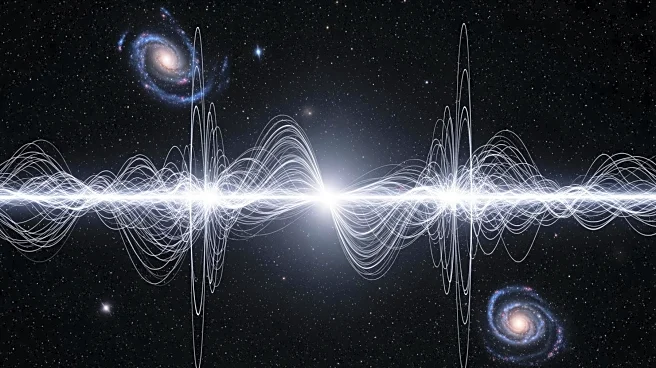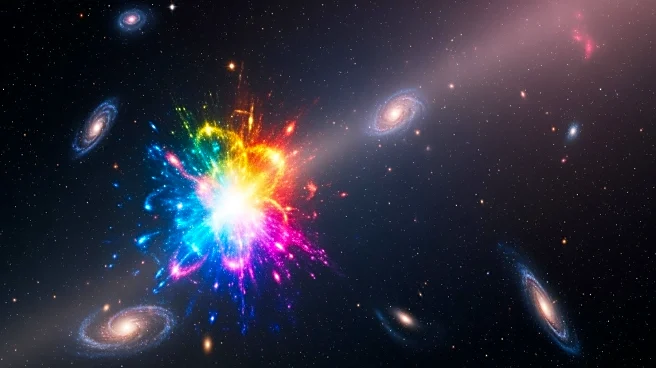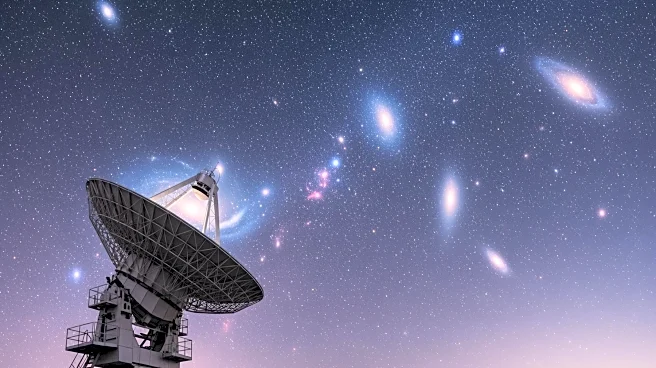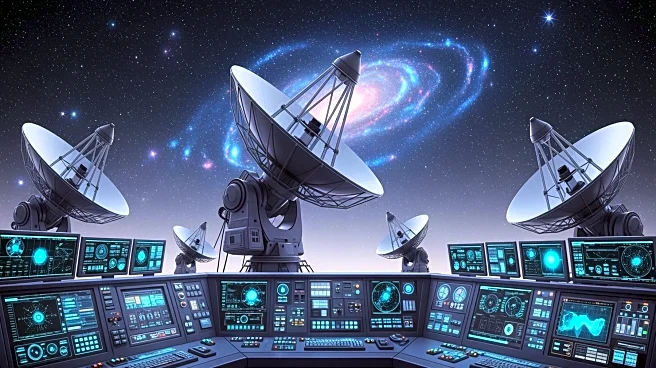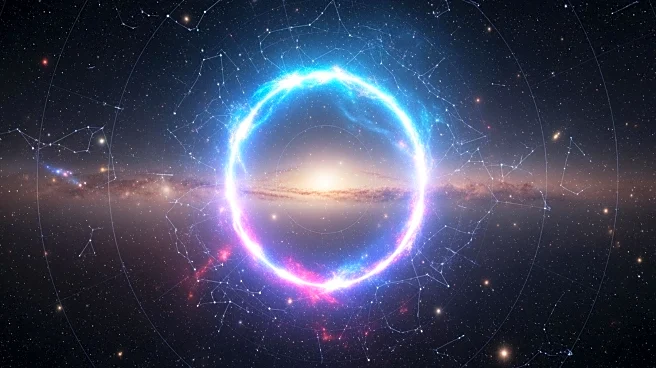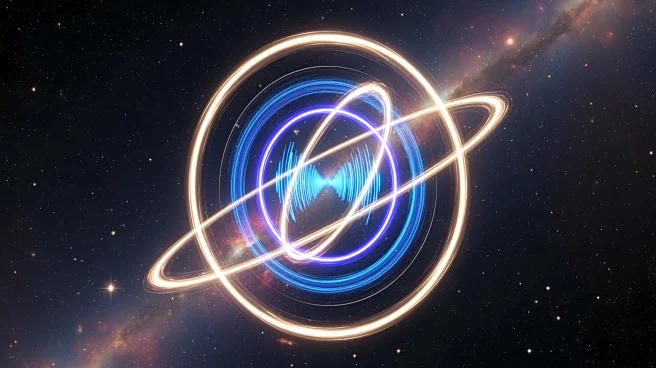What's Happening?
Researchers have developed a method to distinguish between gravitational waves originating from supermassive black hole mergers and those from the Big Bang. This approach involves analyzing the unique 'rhythms' these waves create. According to a study
published in the Journal of Cosmology and Astroparticle Physics, pulsars—dead stars that spin rapidly—are used to detect these cosmic ripples. Pulsars emit beams of radio waves from their magnetic poles, reaching Earth as regular pulses. Any deviation in their timing suggests an external influence, such as a gravitational wave. The North American Nanohertz Observatory for Gravitational Waves (NANOGrav) has published data hinting at the detection of a gravitational-wave background using pulsar arrays. Physicists Hideki Asada and Shun Yamamoto propose a method to differentiate these waves based on interference patterns, particularly focusing on signals from nearby supermassive black holes.
Why It's Important?
The ability to separate gravitational waves from different sources could significantly advance our understanding of the universe. By estimating the number and mass of supermassive black hole binaries, scientists can gain insights into cosmic phenomena. More importantly, isolating signals from primordial gravitational waves—generated during the Big Bang—could provide new perspectives on the universe's birth and cosmic inflation. This period of rapid expansion is crucial to understanding the universe's earliest moments. The study's findings could deepen knowledge of black hole systems and offer clues about the universe's inflationary past.
What's Next?
Detecting the 'beat' effect from supermassive black hole pairs requires more sensitive instruments than currently available. Future advancements in technology and observational methods will be necessary to capture these subtle modulations in pulsar signals. As research progresses, scientists aim to refine their techniques to distinguish between different gravitational wave sources, potentially leading to groundbreaking discoveries about the universe's structure and origins.
Beyond the Headlines
The study highlights the potential for pulsars to serve as cosmic clocks, offering precise measurements that could revolutionize our understanding of space-time. The ethical and cultural implications of such discoveries may influence scientific priorities and funding, as well as public interest in space exploration. Long-term, this research could shift paradigms in cosmology and astrophysics, fostering new theories about the universe's evolution.
